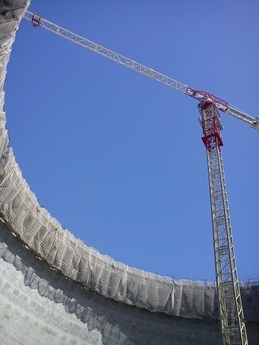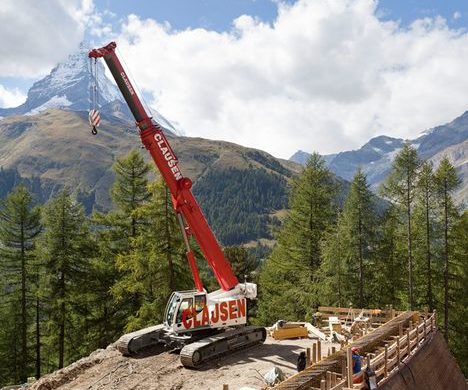Conducting crane inspections according to the new OSHA 1926.1400 crane regulation requires that the inspector also be familiar with many other standards. Among the standards the regulation has incorporated by reference is ASME B30.5 (2004). The full list of incorporated by reference documents are listed in 1926.6.
This overview of the inspection portions of the regulation (1925.1412) will help you identify who is qualified to do crane inspections, when a crane needs to be inspected, and by whom. To begin, two definitions are important to understand. OSHA
describes a “competent person” as one who is capable of identifying existing and predictable hazards which may be unsanitary, hazardous, or dangerous to employees, and who has authorization to take prompt corrective measures. A “qualified person” is someone who, by possession of a recognized degree, certificate, or professional standing, or who by extensive knowledge, training and experience, successfully demonstrated the ability to solve/resolve problems relating to the subject matter, the work, or the project. Remember, everything OSHA does is performance-driven.
The rule provides the definition but expects the employer to determine whether a specific person is competent or qualified to perform a task. A person that is qualified to do one thing is not necessarily qualified for something else. When to inspect a crane generally, there are six times when a crane needs to be inspected, which includes any time it has been modified or repaired and according to regular inspection schedules.
1. Modified Cranes— Anytime a crane is modified, the modification must be inspected by a qualified person. According to 1926.1434 (a), modifications or additions which affect the capacity of a crane or safe operation of the crane are not permitted except when the manufacturer has reviewed and approved the modification. The manufacturer must provide updated load charts, manuals, procedures, or labels as needed. If the manufacturer refuses or fails to review the modification request within 30 days, a registered professional engineer (who is qualified with respect to the crane and modification) can approve the modification, but must provide the same information that the manufacturer would have provided. In addition, cranes can be modified if the original safety factor of the crane is not reduced.
2. Repaired/Adjusted Cranes—Anytime a crane has had a repair to a component that relates to safe operation, it must be inspected by a qualified person prior to initial use.
3. Post Assembly—After assembly is completed, the crane must be inspected by a qualified person. Tower cranes must also have a pre-assembly inspection.
4. Shift inspection—OSHA no longer requires a daily inspection; instead shift inspections must be done by a competent person. This inspection is not required to be documented.
5. Monthly Inspection—The monthly inspection is simply a documented shift inspection done by a competent person. The employer is responsible for maintaining the last three monthly inspections, and they must be made available to an inspector.
6. Annual/Comprehensive Inspection—This inspection must be performed by a qualified person and must be documented. Disassembly is required, as necessary, to complete the inspection. In addition, a functional test must be performed. Any deficiencies must be assessed to determine if they represent safety concerns. If so, the crane must be taken out of service until repairs are made.
Among the items that must be inspected are the crane structure,sheaves and drums, pins and bearings, brakes, safety devices,the engine and tires. Hydraulic hoses, electrical components,pumps, and valves must also be checked. In addition, all wire ropes must be inspected. In the event it is not possible to inspect a wire rope because of crane configuration, it can be noted on the inspection report that it must be inspected when the boom is lowered, but the time span is not to exceed six months. See the regulation for a full list of items that must be inspected. Experience and training required Crane inspectors are responsible for inspecting the crane based on their knowledge, experience, the manufacturer’s guidelines,and the regulations applicable to the specific type of crane. All inspectors have limitations. They need to know what those limitations are and be able to discern whether they fit the category of a qualified person for a specific type of crane. For example, an inspector may be very capable and “qualified” to inspect a telescopic-boom crane but may not have the knowledge or background to inspect a lattice-boom friction crane. Qualification to inspect all crane types takes years of experience and training.
Anytime OSHA is not specific in the regulations, it is up to the employer to determine who is qualified to accomplish the task. Of course, when an accident happens, one of the first things OSHA will look at is what procedures were in place and who the qualified people were. Keep that in mind if you are asked to do a post-assembly inspection on a Manitowoc 18000, for example. If you have never assembled a lattice-boom crane before, you have to ask yourself if you are truly qualified to do the inspection. Because the new regulation has a requirement for post-assembly inspections, it is reasonable to expect that OSHA’s intention is for the inspector to be familiar with assembly, as well. This new regulation gives inspectors more guidance than before, although, it is impossible to make the entire inspection process black and white.
Often inspectors must make judgment calls that may make the owner unhappy. It’s important to stand your ground in these situations. Unfortunately, we all know someone who has conducted inspections when they had no idea what they were looking at. One reason this continues to happen is that too often safety managers and equipment managers may never see the inspection report after it’s completed. They just assume because the crane was inspected, it must be ok. General contractors need to ask hard questions to make sure the process (and the information)doesn’t break down somewhere between the inspector and the equipment manager. Finally, truly professional inspectors are confident that they’ve inspected a crane in its entirety. They don’t cut corners. Slipshod inspections help no one and can hurt the profession as a whole. Each qualified and competent crane inspector doing his or her job well helps to raise awareness in the crane industry of the importance of a quality crane inspection.
Source:



